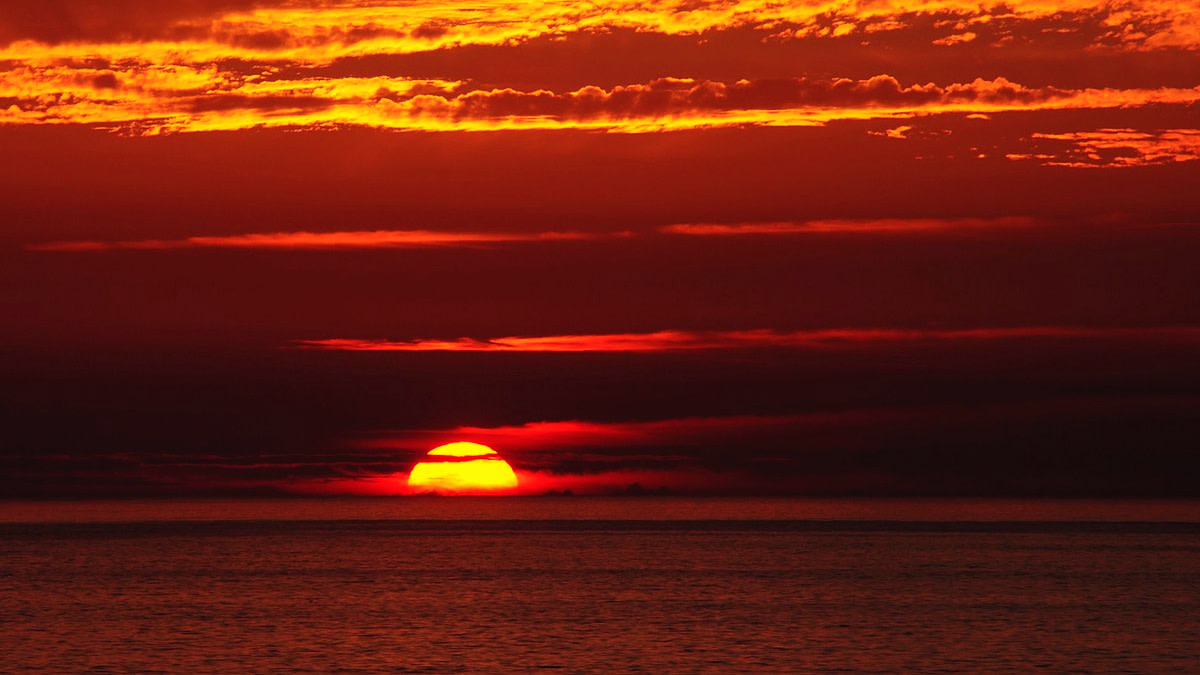
Myths, lies and old wives’ tales loom large in the outdoor pursuits. Here at MeatEater, we’re dedicated to separating facts from bullsh*t, so we created this series to examine suspect yarns. If there’s a belief, rumor or long-held assumption you’d like us to fact check, drop us a note at factchecker@themeateater.com.
Claim
“Red sky at night, sailors’ delight. Red sky at morning, sailors, take warning.” This basic rhyme implies you can predict the weather based on colorful sunrises and sunsets.
Origin
This divine adage made its first written appearance in the Bible (Matthew 16: 2-3). In a confrontation between Jesus and the Pharisees over their demand for a sign from heaven, Christ offers up a tongue-in-cheek meteorological hot tip.
“When it is evening, you say, ‘It will be fair weather; for the sky is red. And in the morning, it will be stormy today, for the sky is red and threatening.’ You know how to interpret the appearance of the sky, but you cannot interpret the signs of the times.”
The text implies this was already established wisdom, making it at minimum two millennia old. It’s most often viewed as a saying for mariners, but there are other iterations of the phrase that replace “sailors” with “shepherds.”
Facts
Here’s a basic explanation: Weather systems generally travel from west to east around the United States and Canada. So, when the sun rises and illuminates approaching clouds to the west, there’s a system headed your way. On the contrary, when the sun sets and illuminates departing clouds to the east, it means the storm is beyond you and fair weather will follow.
Here’s a complex explanation: When the pressure is low, the atmosphere will have lots of clouds and few aerosols. When pressure is high, the atmosphere will have few clouds and lots of aerosols. Because of its long wavelengths, red light is more easily scattered by clouds. Because of its short wavelengths, blue light is more easily scattered by aerosols. So, red light indicates low pressure and bad weather, while blue light indicates high pressure and clear skies.
Thirty to 60 degrees latitude in both hemispheres experience westerlies. This means the winds blow from west to east. Zero to 30 degrees latitude in both hemispheres get easterlies. This means the winds blow from east to west. This saying then only applies to northern North America, southern South America, most of Europe, and part of Asia. It would be backwards for Central America, most of Africa, all of Asia’s islands, and most of Australia.
Takeaway
This fun rhyme is surprisingly accurate (for part of the world). But it doesn’t address scenarios where systems move from north to south, south to north, or east to west, or get pushed around by mountains and bodies of water. It also doesn’t account for other particles in the atmosphere that could alter sky color, like dirt from a farmer working up a field or smoke from a burning mountainside.
Still, this easy-to-remember saying has helped millions of humans make correct forecasts for thousands of years. I won’t be deleting my phone’s weather app anytime soon, though.
Feature image via Wiki Commons.




